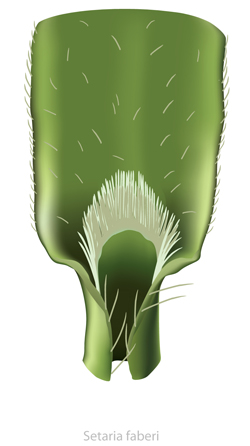AMES, Iowa - Some Iowa State University students are finding out that there's more to a blade of grass than meets the eye.
The four seniors study biological and pre-medical illustration (BPMI). They've been asked to create technically accurate illustrations of several grass species for a Weed ID Guide to be published in March by the Corn and Soybean Initiative. The publication is part of a series of field guides widely used by agriculture and university professionals and growers to aid in-field crop management.
The students are Jamie Rippke, Ames; Stephen Robinson, Story City; Kaitlin Lindsay, Kearney, Neb.; and Jessica Thompson, Chicago. December 2009 graduate Azusa Okuwa, Kanazawa, Japan, also participated in the project. They earn course credit for their work.
BPMI is an undergraduate major in Iowa State's colleges of Design and Liberal Arts and Sciences for students who want to combine interests and aptitudes in science and art. Based on the theme of "communicating science through art," the major prepares students for careers in biological illustration or for graduate education in medical illustration.
"In BPMI, we always try to find a practical, client-based project for the students to experience," said Dean Biechler, BPMI program coordinator and lecturer in art and design. "This project is exciting because it will be published and widely distributed. That makes it a unique and wonderful project for the students."
Before they could start sketching, however, the budding illustrators had to pick up some basics about their subject matter. They toured the Ada Hayden Herbarium in Bessey Hall, which has the largest collection of Iowa plants and fungi. The students studied how to locate and handle specimens in the collection. They learned about key identifying characteristics in grasses and grass-like weeds, specifically the collar region, where the blade and sheath of the plant meet. And they looked at dried specimens under a dissecting microscope, which provides low magnification of three-dimensional objects.
Then they created rough sketches of their assigned grasses:
large crabgrass, barnyard grass, goosegrass, quackgrass,
witchgrass, cheatgrass, yellow nutsedge, field horsetail,
foxtails, shattercane, longspine sandbur, downy brome and
others that cause problems for corn and soybean crops.
Once their pencil sketches were refined and then approved by
faculty, the students finalized their illustrations on
computer. They scanned the pencil sketches into the computer,
and created vector paths (digitally tracing the scans) to
render the final images in the software program Adobe
Illustrator. The final vector-based illustrations are in full
color.
"Working with dried specimens under the dissecting scope is always a treat. I love handling and working with specimens in person," said Lindsay, who plans to go on to graduate school to become a professional medical or scientific illustrator.
Thompson, who wants to focus her medical illustration graduate degree on prosthetics, said the most interesting part of the project was the research.
"I had very little experience with botany, in general," Thompson said. "Upon doing the research, I have a much better understanding on how to identify different grasses. I had no clue as to how similar all these grasses look to the untrained eye. Attention to detail is very important on this project and will be a major part of my career."
Rippke, who also plans to study medical illustration in graduate school, agreed that the project required strict attention to detail.
"I had no idea there were so many tiny characteristics to classify plants," Rippke said. "In medical illustration, it's very important to pay attention to specific details. This project has allowed me to focus on little details. I learned a lot from this."
The Iowa State University Corn and Soybean Initiative provides science-based crop production information to Iowa corn and soybean growers to increase their productivity and global competitiveness while also conserving the environment.
